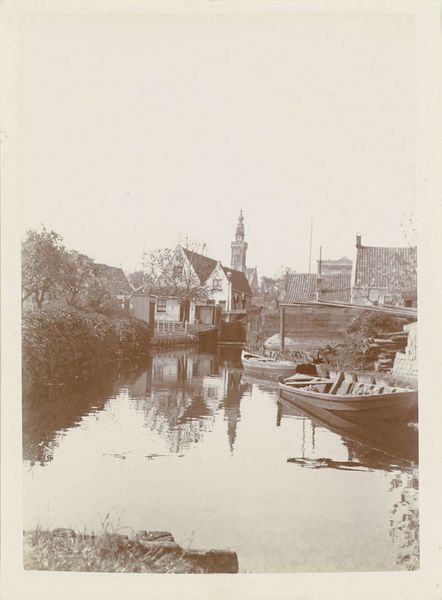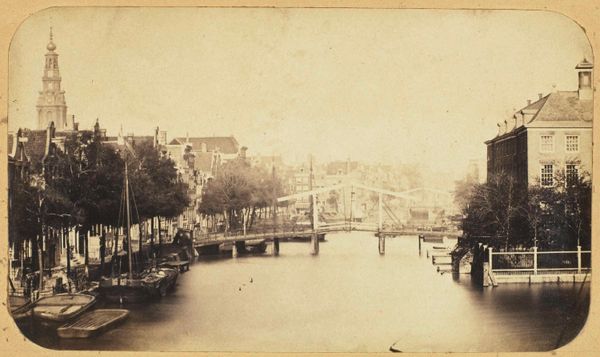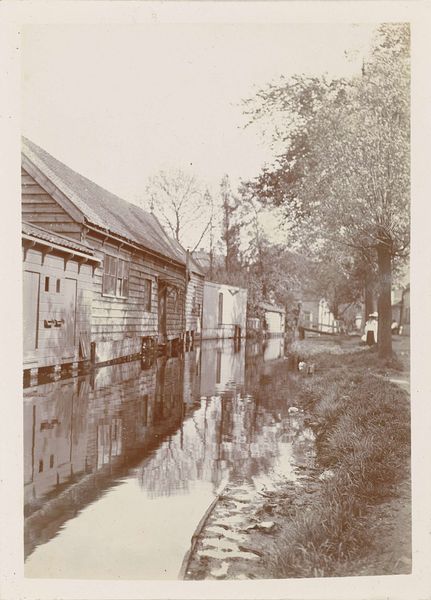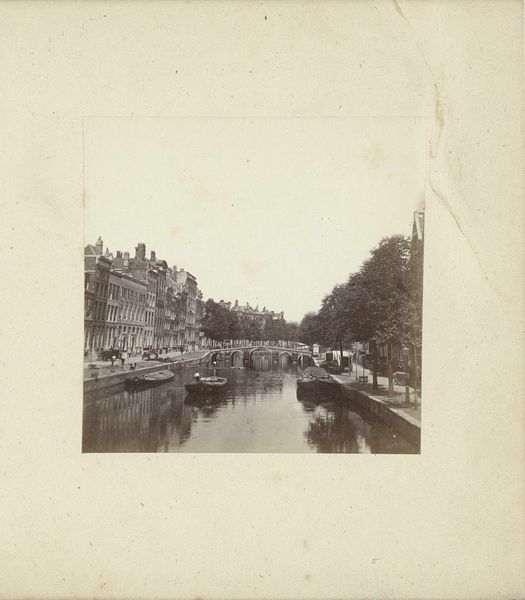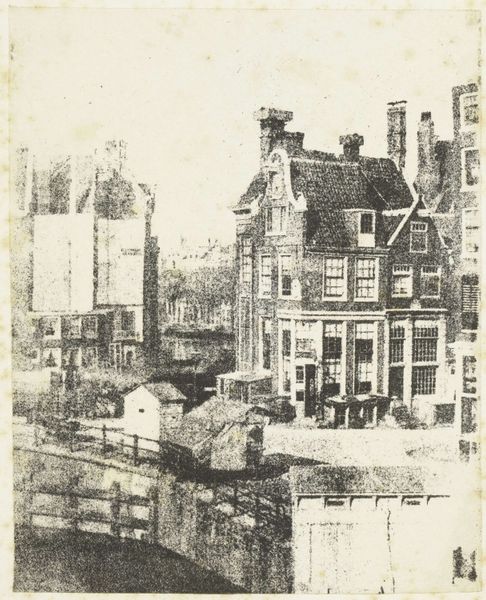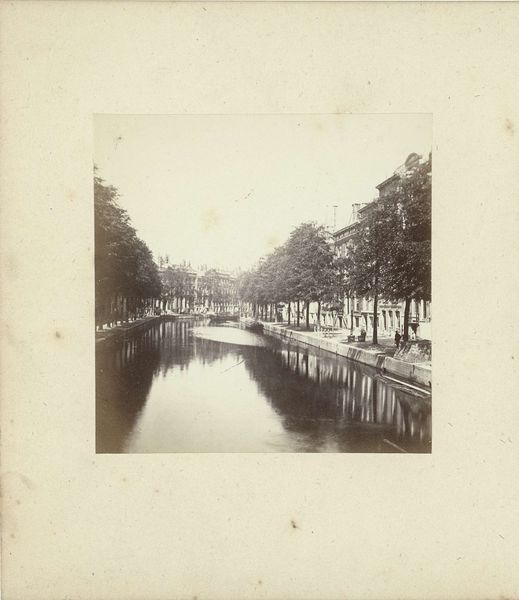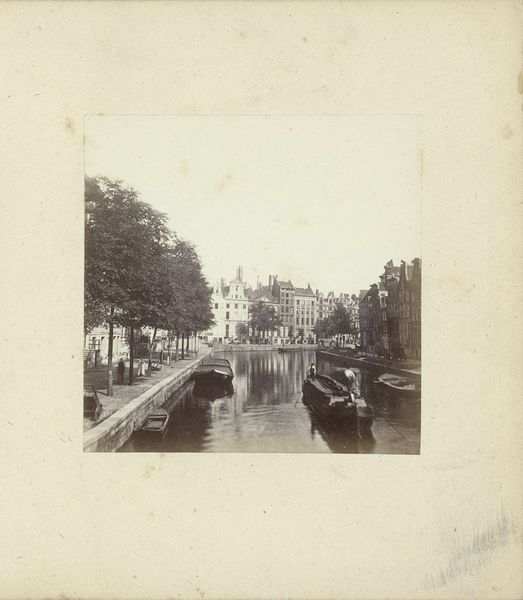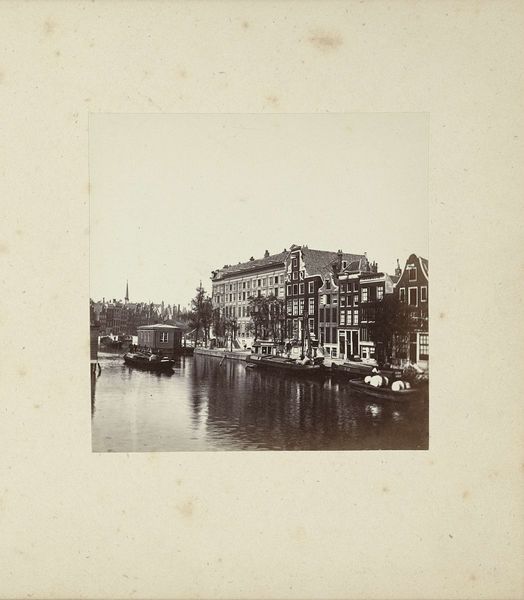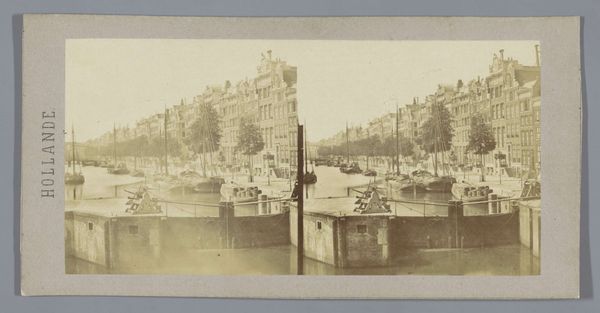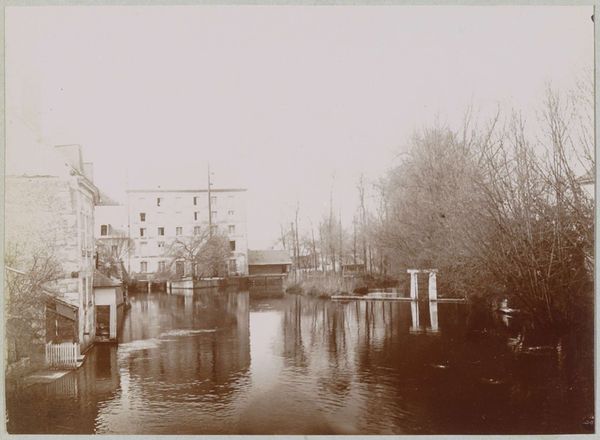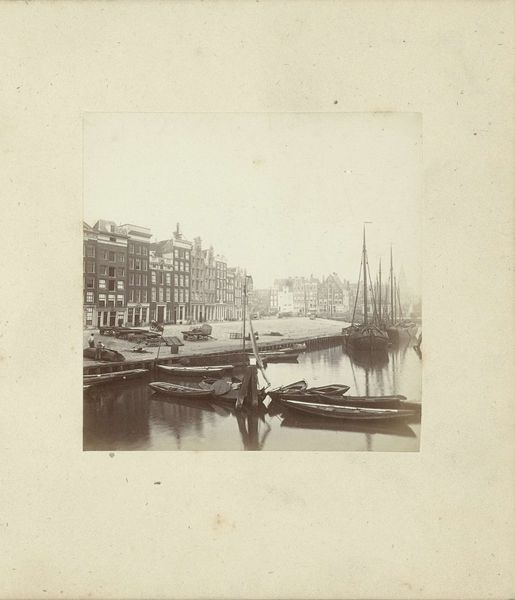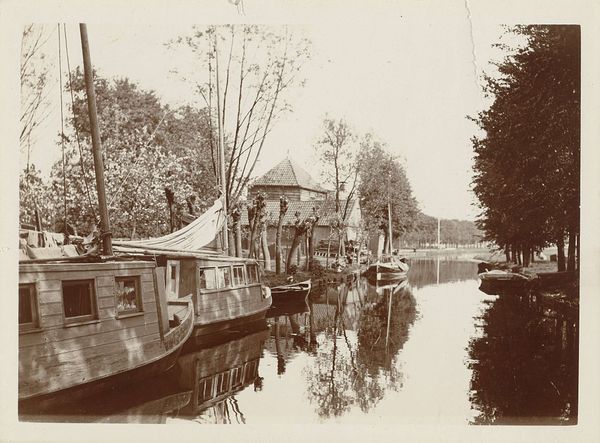
Dimensions: height 152 mm, width 109 mm
Copyright: Rijks Museum: Open Domain
Editor: Here we have "Zwanenburgwal in Amsterdam, rechts de Raamgracht," a photograph, actually an albumen print, created in 1904. The sepia tone really creates a calm, almost nostalgic feeling. The reflection of the buildings in the canal is almost a perfect mirror. What visual elements stand out to you most in this image? Curator: The immediate allure resides in the geometric interplay: the rigid architecture versus the fluid reflections in the water, the verticality of the buildings opposed to the horizontality of the canal. Observe how the light filters through the foliage, creating nuanced tonal variations. The photograph is less concerned with representing Amsterdam faithfully and more focused on the balance of forms and tonal arrangement. Editor: So you're saying the photo is almost abstract in its way of representing Amsterdam? The texture in the reflections and trees certainly contribute. Curator: Precisely. It transcends a mere depiction of place. Notice how the photographer has carefully positioned the viewpoint to emphasize these formal relationships. The lines, tones and shapes are working together as the primary subject, with the buildings, water and vegetation acting as the elements that produce those artistic conditions. Consider also how the photographer utilizes the properties inherent in the albumen print to achieve this overall visual texture. Editor: I see that. The albumen print, with its specific chemical qualities, gives the picture an almost dreamlike quality. It definitely makes me think about composition in a new way. Curator: Indeed. It encourages us to see beyond the literal subject matter and to appreciate the formal qualities that constitute the artwork itself. Editor: I hadn't considered analyzing a landscape so formally. It’s insightful to shift focus towards composition, light, and medium when interpreting photography. Thanks!
Comments
No comments
Be the first to comment and join the conversation on the ultimate creative platform.
